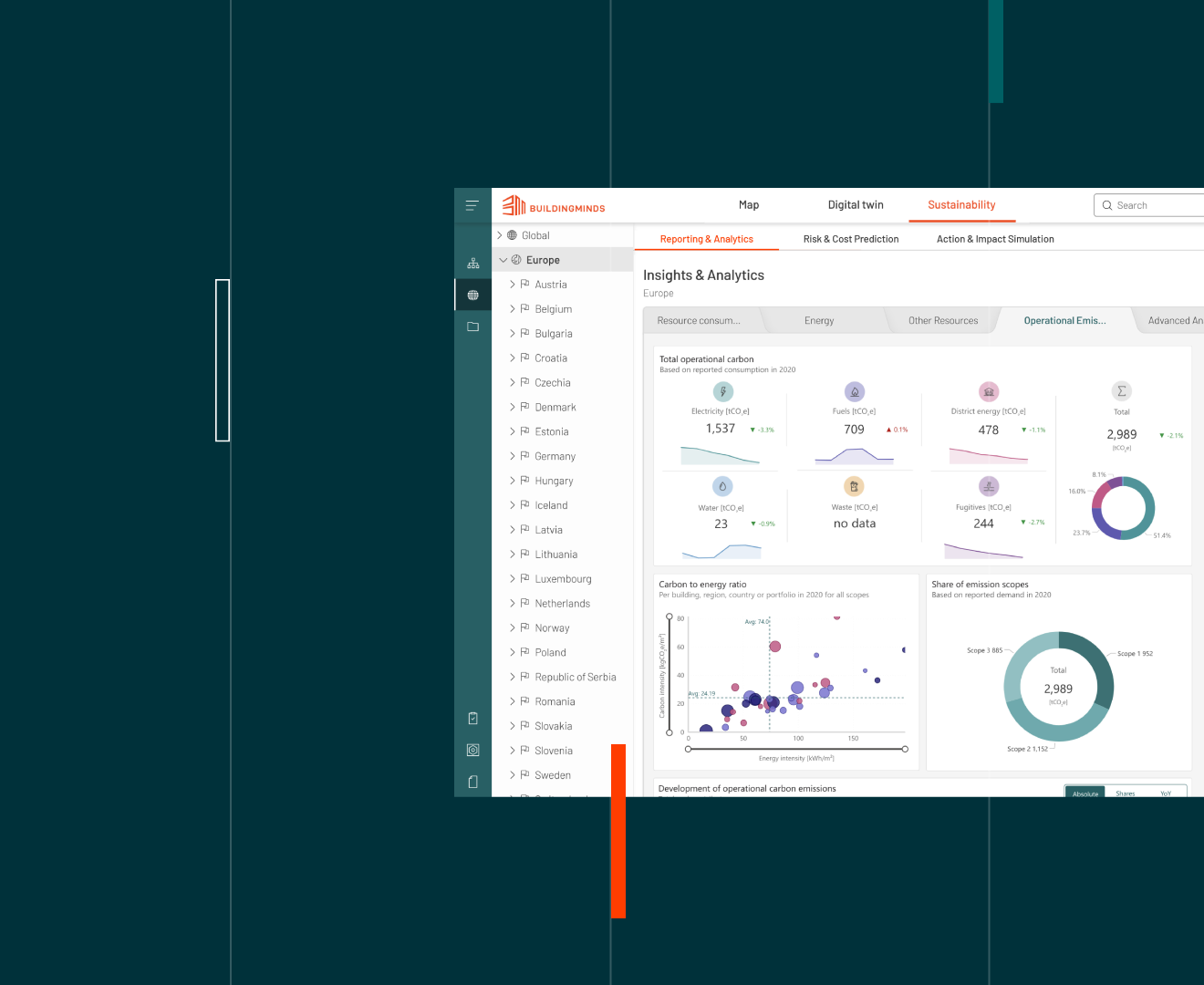How Digital Building Twins accelerate building performance

Digital transformation is quickly reshaping our world as we know it. The fourth industrial revolution is well underway, which has had an impact on the manufacturing, industrial, and real estate industries. This digital shift – coupled with the Internet of Things (IoT) and Cloud technologies – are generating a vast amount of data every day. According to the independent research firm Gartner, 20 billion connected “things” will be interconnected to the Internet by 2020 each generating more and more data. As the real estate and building industries look to digitalization to transform operational effectiveness, promote sustainability, and increase tenant retention, interest in digital building twin technologies is rising.
The rise of the Digital Building Twin and the commercial real estate industry
Not surprisingly, there’s been much buzz in the commercial real estate industry lately about building “digital twins” and how they can improve a host of processes for real estate professionals. A true “digital building twin” needs to be able to associate and connect a building’s design and utilization, in a single model, that mimics and therefore predicts the building’s operation and performance-based upon a multitude of parameters.
Optimizing building performance through data
When exploring the power of the digital building twin, approaching it from a perspective that encompasses the entirety of a building ecosystem allows you to completely reimagine such key aspects such as air quality, temperature control, furnishings, and facilities in a way that responds to human sensitivities and personas. By being able to harness real-time building data and usage patterns, a digital single source of truth can assist building management professionals in optimizing building performance and tenant experience, while driving savings through predictive maintenance. Owners can also use the platform to glean insights about how occupants use the building and automatically predict their needs, such as environmental comfort.
A digital single source of truth can assist building management professionals in optimizing building performance and tenant experience.
How does the digital building twin assist real estate owners in improving space utilization? One answer is the rapidly growing rise of what is known today as coworking spaces. “When we think of coworking spaces, we think of resource efficiency in sustainability in terms of saving energy and saving water. Upstream of that is shared facilities. Not having to have every one of these buildings build their infrastructure that’s required, but being able to share those resources is huge.” said Lois Vitt Sale, Senior Vice President, and Chief Sustainability Officer at Wight & Co.
Integration of a digital building twin technology supports a company’s ability to become flexible and the possibilities of workspace optimization.
This makes it easier for the building to fit the users’ needs and alert the appropriate service teams of problems and issues that arise.
Improving office occupancy in corporate offices
What can we expect from digital twin technology in shared office spaces? Sensors in the building collect all kind of information like occupancy, temperature, energy consumption, etc. The digital building twin makes it possible to collect the information provided by the sensors, creating the ‘building’s brain.’
Through analysis of data of the occupancy for workspaces and conference rooms, workplace optimization is possible. The resulting data can, for example, show that certain workplaces are often underutilized, creating room for improvement. Also, the digital building twin contributes to managing building operating expenses. Utilities are a large part of building operating expenses. The digital twin can help map the utilization of the building and adapt the lighting, heat, air quality, cleaning, and security, among others for controlled zones within the building. This creates energy conservation growth and supports sustainability.
Digital Building Twins in commercial real estate
For commercial real estate, the last five years have been transformative as organizations start to move beyond mere efficiency of space and start to consider the bigger picture. Integral to this shift has been the importance of data modeling within commercial real estate organizations. “Digital Building Twins” are quickly becoming the go-to for creating robust data models about all aspects of a building at various stages of its life cycle.
However, astute observers will notice some key similarities between what’s now called a digital twin of a built environment and Building Information Modeling (or “BIM”) software. One aspect common in BIM & digital twin will be emphasis on the sustainability factor of any asset, as the BIM evolves from 6D to 7D stage an overlap of BIM with Digital Twin can be visible. The digital twin—a 3D model of the building, enhanced with technical information relevant for later operations—is the foundation for efficient, cost-optimized, and forward-looking building management. The ability to model building performance has far-reaching implications for the buildings industry.
Building operations data is a valuable resource and can bridge the gaps from construction documentation to many of the data analytics applications.
Building simulations can be used to assess the energy demand, indoor environmental quality, CO2 emissions, and payback periods of energy saving measures over the lifetime of the asset. BIM is likely to play a crucial role in unlocking building life cycle optimization through innovative asset management processes and real-time operational data. Building operations data is a valuable resource and can bridge the gaps from construction documentation to many of the data analytics applications (e.g., energy management systems) and other smart buildings technologies such as the Internet of Things and intelligent automation solutions.
In conclusion
Buildings will ultimately be able to maximize the wellbeing of their inhabitants, acting as artificially intelligent facility managers. With new construction trends emerging, buildings are starting to generate energy leading to the rise of energy trading between neighboring smart buildings via cooperation platforms such as the digital building twin. Overall, the digital building twin will be able to support building owners seeking to be a pioneer in sustainability and energy management. Future concerns about rising energy consumption and maintenance costs can be addressed efficiently and intelligently.



